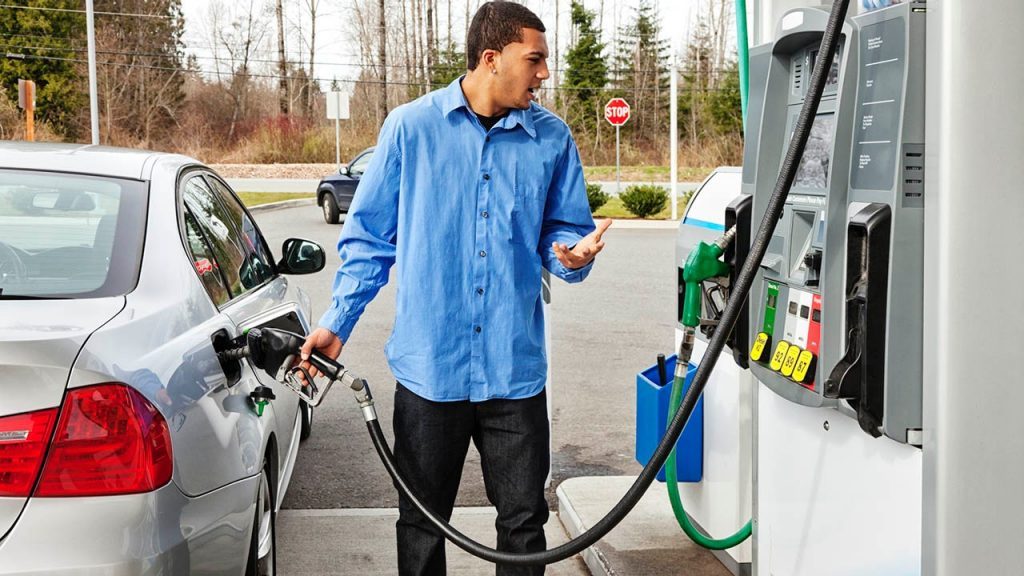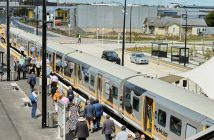The premature end of the Auckland Regional Fuel Tax (ARFT) marks the third time in 30 years a National-led government has repealed such a tax, and is a clear example of New Zealand’s lack of direction when it comes to infrastructure, writes the University of Auckland’s Dr Timothy Welch

When the National Party announced its plan to scrap the Auckland regional fuel tax at the end of June, it removed a significant source of infrastructure funding for the region.
The now defunct regional fuel tax was put in place by the Labour government in 2018. It was meant to last ten years and raise NZ$1.5 billion to help fund a list of projects: the Eastern Busway, new electric train units for the City Rail Link, improved bus links to the airport, and redevelopment of the downtown ferry terminal.
The tax also funded road safety initiatives, road corridor improvements, bus and cycle lanes, red light cameras and speed humps. These were all clearly listed in the fuel tax legislation – and are clearly needed: Auckland road deaths hover around 50 people per year.
The government has also announced that legislation to axe the ARFT would specifically ban spending any remaining funds (estimated to be over $380 million) on cycle or bus lanes. This is despite strong arguments in favour of sustainable travel modes, as global temperatures surpassed the critical 1.5 degrees Celsius threshold last year.
Regional fuel taxes have been implemented and repealed in New Zealand for decades. One was implemented in 1992 by the National government and repealed by them in 1996 over concerns about how it affected national fuel prices.
The National Party also has a history of repealing Labour’s regional fuel tax schemes. Legislation enacted in 2008 by the Labour Party implemented a $0.02 fuel tax for Auckland, rising to $0.095 after two years. The tax was intended to be in place for 30 years. The new National government quickly repealed this in 2009.
The Auckland regional fuel tax that is now about to enter the history books took effect on July 1 2018, beginning with a $0.10 tax and increasing to $0.115 over 10 years with an aim to raise $1.5 billion in revenue. It was meant to accelerate infrastructure projects that would lack the funding needed to move forward.
In his speech axing yet another regional fuel tax, Christopher Luxon argued that the “fuel tax has actually not been used to deliver them [infrastructure projects]– instead it’s delivered more cycle lanes, red light cameras, and speed humps”.
Most of the $780m raised by the Auckland fuel tax has been allocated to the Eastern Busway ($272m) and new commuter train cars ($330m). Though some money has been spent on cycle and bus lanes, the funds have been spread across a large number of projects, even including the redevelopment of the Downtown ferry terminal.
The funds from the fuel tax have been spent as intended to benefit Aucklanders across a wide range of transport-related infrastructure.
Criticism has been levelled at the tax for not exclusively funding roads and road improvements, excluding any other transport investment. However, that’s not how any fuel tax works. Taxes collected at the national level are redistributed to various projects, including public transport and active modes of transportation (cycling and walking).
There is even a portion of fuel taxes collected from fuel companies and paid to regional councils – the Local Authority Fuel Tax – at a rate of $0.0066 per litre, and councils can spend that as they wish, on virtually anything, transport-related or not.
Without a regional fuel tax, infrastructure funds at the discretion of local governments would come from rates. For Auckland to plug the funding gap created by the loss of the fuel tax, a rates increase would be needed, which Auckland Council is unlikely to do on top of the 7.8 percent increase that will take effect this year.
Critics of the regional fuel tax point to the sizeable unspent amount – over $300m – as evidence that we don’t need it. That politicians would say this strikes me as disingenuous. The Auckland fuel tax fund isn’t like a bank account that pays bills as soon as they come in. Projects funded with the tax are long-term and require funds to be ready at the planning stage and paid out at various points over the project’s life.
As Auckland Mayor Wayne Brown has pointed out, funds in the account are not “collecting dust” but have been allocated to projects that will use the funds in the coming years. In other words, the money is needed and already spoken for.
A long-standing concern about the Auckland fuel tax is its disproportionate impact on lower-income people, making it a regressive form of taxation. There is undoubtedly some validity to this argument as lower-income households tend to own older, less efficient vehicles, potentially need to drive longer distances and spend a greater portion of their income on transport than higher-income households.
But this argument is true of all fuel taxes and the GST that applies to nearly everything we purchase. It is, unfortunately, the nature of a consumption-based tax. The loss of half-price public transport fares is likely more painful for lower-income families than the Auckland fuel tax will be, also axed by the National-led Government late last year.
There are two ways to address this inequity. The first is to use tax revenue to offset the potential cost of petrol to lower-income households. This is partly what the Auckland fuel tax aimed to do by providing better public transport infrastructure and, to a far lesser extent, cycling infrastructure so people had more ways to move around the city without consuming fuel.
The other way to charge road users more fairly is to implement a congestion charge that would give people more control over how much they pay for travel based on when and where and how they choose to travel.
Though a congestion charge has been touted as the best replacement for the fuel tax and Auckland Council voted late last year to investigate ‘time-based’ charging, such a scheme would take many years to plan and implement.
Failure to plan
Shifts in funding priorities are part of politics, of course. But the latest U-turns bring into sharp focus a lack of direction on infrastructure. This includes previous governments, National and Labour alike, which have failed to lock in sustainable forward planning.
Nothing exemplifies this more than the on-again, off-again plans for an expanded or new Auckland harbour crossing. After several false starts under the previous Labour government, the new government again cancelled the plans in favour of “providing extra lanes for traffic” and “enhancing the existing busway”.
This is despite 70 years of evidence showing that adding more roads worsens congestion. As the adage goes, failing to plan is planning to fail.
Consequently, New Zealand’s vehicle ownership rates are among the highest in the world. Per-capita road deaths are higher than in many peer nations. At the same time, rates of walking, cycling and public transport use remain stubbornly low – due mainly to a lack of supply, rather than insufficient demand.
Nationally, rail networks remain under-developed, despite clear demand and excellent examples of success internationally.
Decades of see-sawing government priorities mean New Zealand’s biggest and most economically important city has no clear plan to transition out of its fossil fuel dependence.
Unless long-term transport planning and related infrastructure projects are elevated out of the political cycle, it is hard to be optimistic about sustainable progress.








